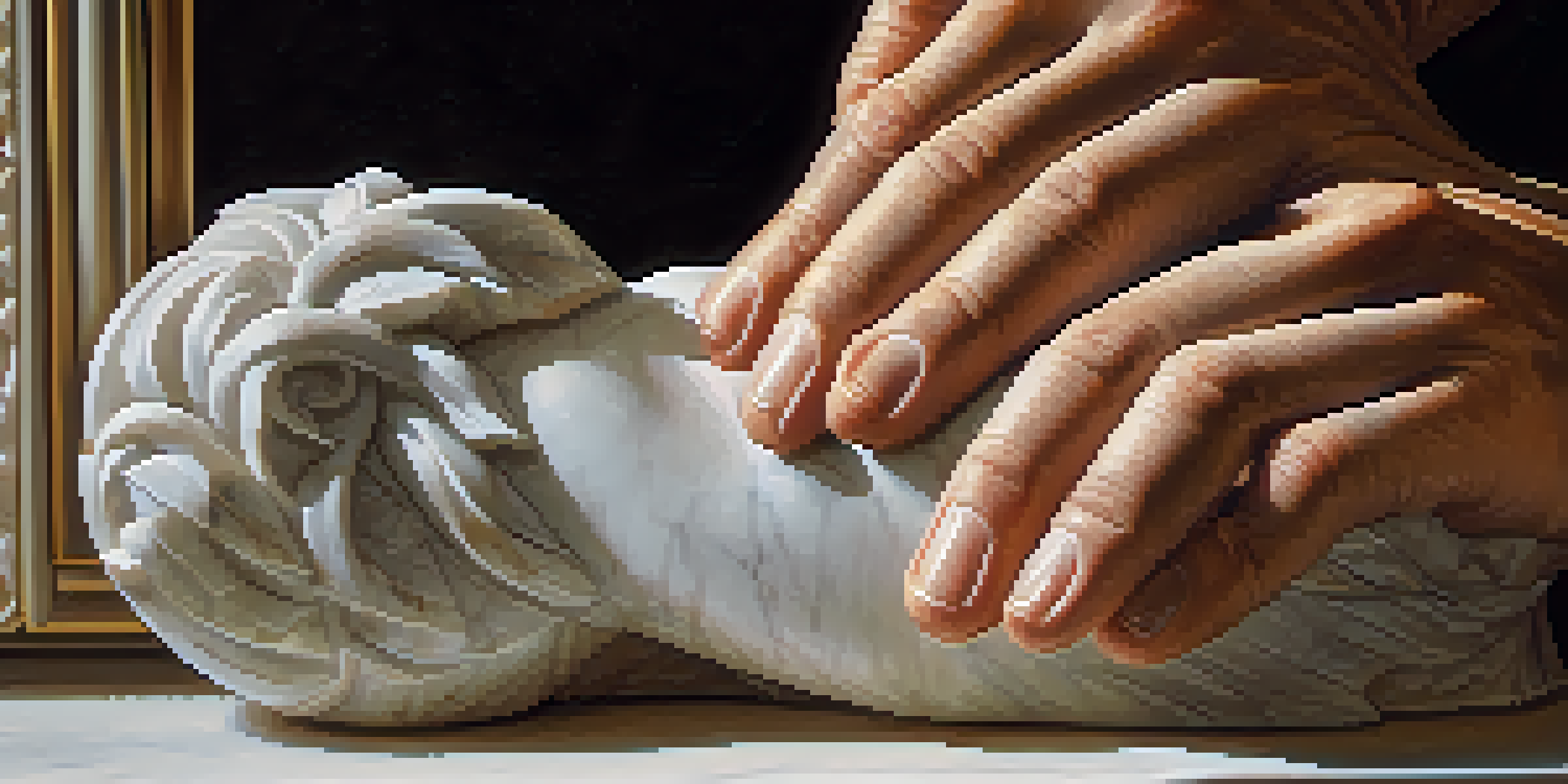The Role of Touch in Sculptural Art Appreciation

The Unique Nature of Sculptural Art and Touch
Sculptural art, unlike paintings or photographs, exists in three dimensions, inviting viewers to engage with it physically. The tactile experience of touching a sculpture can significantly enhance our appreciation and understanding of the piece. This physical interaction allows us to explore textures, shapes, and details that are often overlooked from a distance.
The Importance of Texture in Sculptural Art
Texture plays a pivotal role in how we perceive art; it can evoke emotions and create a sense of realism. For example, running your fingers over the rough surface of a stone sculpture can evoke feelings of strength or ruggedness. On the other hand, a smooth marble piece might give off a sense of elegance and tranquility, making the experience of touch essential in grasping the artist's intent.
Touch Enhances Sculptural Engagement
The tactile experience of touching sculptures deepens our appreciation by allowing us to explore textures and details that might be missed from a distance.
Cultural Significance of Touch in Art
Throughout history, many cultures have embraced the idea of touch as a means of connecting with art. In some traditions, sculptures are not merely viewed; they are engaged with physically, inviting a deeper connection between the viewer and the artwork. This cultural context emphasizes that touch is not just a sensory experience but a significant part of the artwork's meaning and appreciation.
Touch in Contemporary Sculptural Practices
In contemporary art, artists often incorporate interactive elements that encourage viewers to touch and engage with their sculptures. For instance, installations might include soft materials or movable parts, inviting a playful exploration. This trend highlights a shift towards experiential art, where the act of touching becomes a crucial part of the narrative.
Cultural Importance of Artistic Touch
Many cultures view touch as a vital means of connecting with art, emphasizing its role in enhancing the meaning and appreciation of sculptures.
The Psychological Impact of Touch on Art Appreciation
Touch can trigger emotional responses that enhance our overall experience of art. Studies suggest that physical engagement with art can lead to a greater sense of connection and empathy towards the piece. This psychological bond can transform a simple viewing into a memorable encounter, making touch an essential aspect of appreciating sculptural art.
Barriers to Touch in Art Galleries and Museums
Despite the benefits of touch, many galleries and museums restrict physical interaction with sculptures. These limitations stem from concerns about preservation and the potential for damage. However, this raises an interesting debate about the balance between protecting art and allowing viewers to engage fully with the work.
Innovative Touch Solutions in Art
To encourage physical interaction while preserving art, institutions are adopting innovative approaches like tactile replicas and virtual reality experiences.
Innovative Solutions for Engaging Touch in Art Spaces
To bridge the gap between touch and preservation, some institutions are exploring innovative solutions. For example, tactile replicas or virtual reality experiences allow visitors to engage with sculptures without risking damage. These advancements offer exciting new ways for people to connect with art while respecting the original works.
The Future of Touch in Sculptural Art Appreciation
As technology advances and our understanding of art appreciation deepens, the role of touch is likely to evolve. Future art experiences may increasingly prioritize tactile engagement, encouraging a more holistic approach to understanding and appreciating sculptures. By embracing touch, we can cultivate a richer, more immersive interaction with art that resonates on multiple levels.